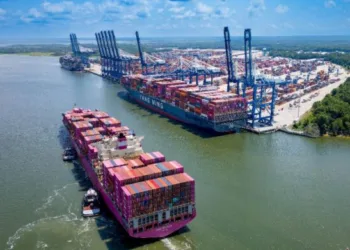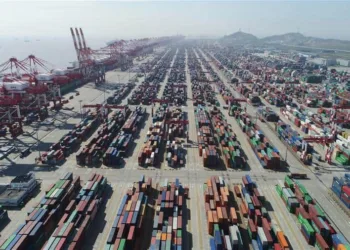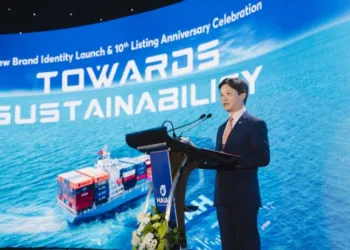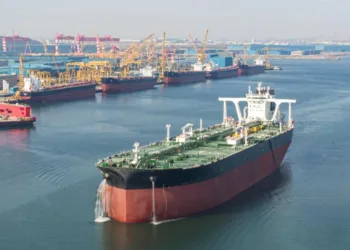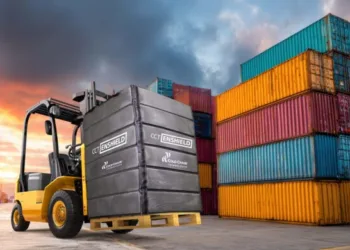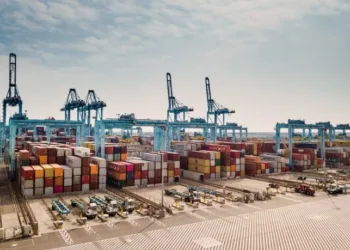The explosion in global demand for data processing and storage is colliding with constraints on land-based infrastructure, leading to new maritime solutions: floating data centres. These facilities, hosted on barges or retrofitted ships, promise flexibility, cheaper deployment, and relief from land and water resource pressures.
Nautilus Data Technologies has pioneered the model, operating Stockton 1 since 2021 on a 90 m barge in California’s San Joaquin River, delivering 7MW of IT capacity using natural water cooling. A second facility is underway in Ireland. Elsewhere, experiments include China’s submerged Hainan Underwater Intelligent Computing Centre and France’s solar-powered Denv-R 100kW floater launched in 2023.
Momentum is building. In July, Mitsui OSK Lines (MOL) signed an MoU with Karadeniz subsidiary Karpowership’s Kinetics initiative to deliver a large-scale floating data centre by 2027. The project (pictured) involves retrofitting a 120 m car carrier into a platform with 20MW to 73MW capacity and direct seawater cooling. Japan’s NYK, NTT Facilities, Eurus Energy, MUFG Bank, and Yokohama city are also planning a demonstration barge at Osanbashi pier, while Russia and China are also pursuing pilot projects.
Floating data centres appeal for four key reasons. First, flexibility: any port with power and fibre access can host one. Second, land scarcity: in dense or island nations such as Japan and Singapore, real estate for large data centres is prohibitively expensive. Third, water use: conventional data centres in the US consume around 1.7bn litres per day, often in drought-prone states. Floating facilities tap seawater or river water directly, avoiding fresh water stress. Hybrid systems, such as Keppel’s LNG-based cooling, offer additional alternatives. Finally, repurposing ships lowers costs—older vessels like car carriers or barges can be converted into data centres, providing both asset reuse and deployment flexibility.
The scale of potential demand is striking. McKinsey estimates global data centre capacity could grow 19–22% annually to 171–219GW by 2030, up from today’s 60GW, with a high case of 27% growth to 298GW. This would require more capacity to be built in six years than in the past two decades combined. Investments are rising sharply, from $223bn in 2022 to $406bn in 2025, according to Statista.
The question is whether floating facilities can meaningfully fill the gap. Splash Extra analysis suggests that to match the capacity of the largest onshore data centres, more than 600 converted vessels would be required. Today, there is not yet a single operational floating data centre on a converted commercial vessel—though MOL’s planned project could change that by 2027.
Globally, the average onshore data centre is 100,000 sq m, and there are already over 11,800 such facilities. Given soaring demand, rising land costs, and environmental pressures, the potential for maritime data centres appears significant. If early projects succeed, the industry may see a wave of ship conversions supplying cloud infrastructure from rivers and ports.
This is a shortened version from an in-depth feature carried by Splash Extra earlier this week.




